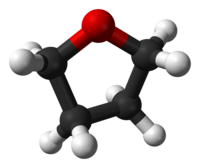
Photo from wikipedia
A comprehensive two-dimensional liquid chromatography-based biomimetic platform (LCxLC) has been developed and validated for drug diffusion studies. Human serum albumin (HSA) and immobilized artificial membrane (IAM) were thereby used in… Click to show full abstract
A comprehensive two-dimensional liquid chromatography-based biomimetic platform (LCxLC) has been developed and validated for drug diffusion studies. Human serum albumin (HSA) and immobilized artificial membrane (IAM) were thereby used in the first (1D) and second (2D) separation dimension, respectively. While the former was meant to emulate the blood, the latter was instead intended to mimic the intestinal mucosa epithelium. Therefore, the experimental conditions, i.e. pH, temperature and buffer composition, were modulated to reflect faithfully in vivo conditions. 30 compounds, whose effective intestinal permeability (Peff) assayed in situ on humans by a validated technique was known from the literature, were used as model drugs. A good and orthogonal separation was achieved for the whole dataset, although for a better distribution of the most polar compounds in the elution window a segmented gradient elution program had to be employed. Interestingly, the passively uptaken compounds having the most favourable Peff populated a specific area of the 2D plots, implying that the affinity for HSA and IAM has to lie in specific ranges in order for a compound to be satisfactorily absorbed from the intestinal lumen. Although these results should be regarded as preliminary, this work paves an entirely new and unprecedented way to profile pharmaceutically relevant compounds for their in vivo absorption and distribution potential.
Journal Title: Analytica chimica acta
Year Published: 2021
Link to full text (if available)
Share on Social Media: Sign Up to like & get
recommendations!